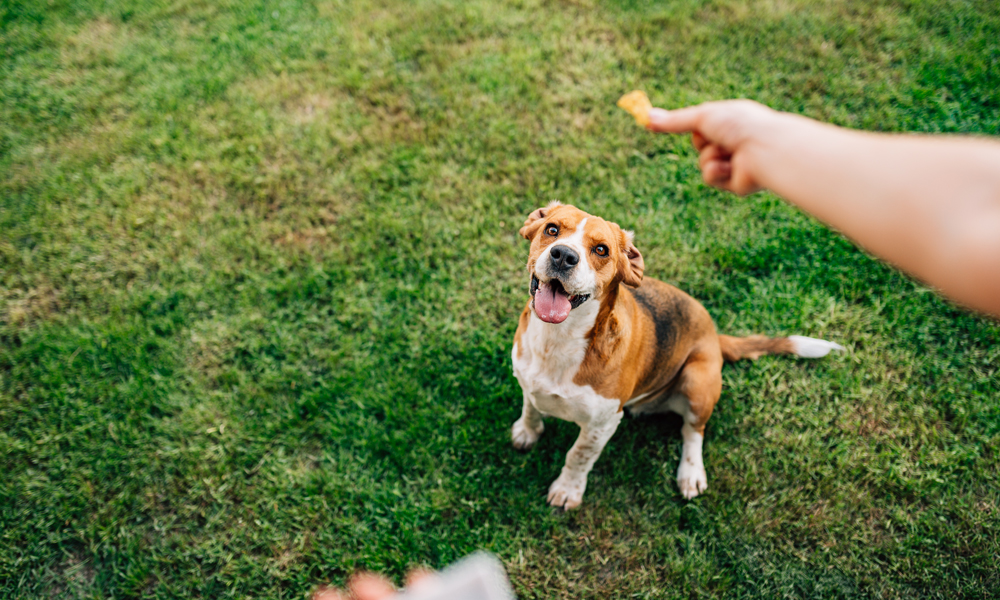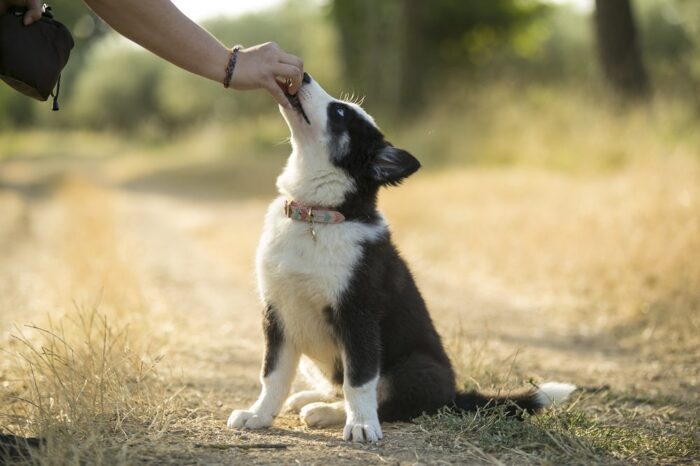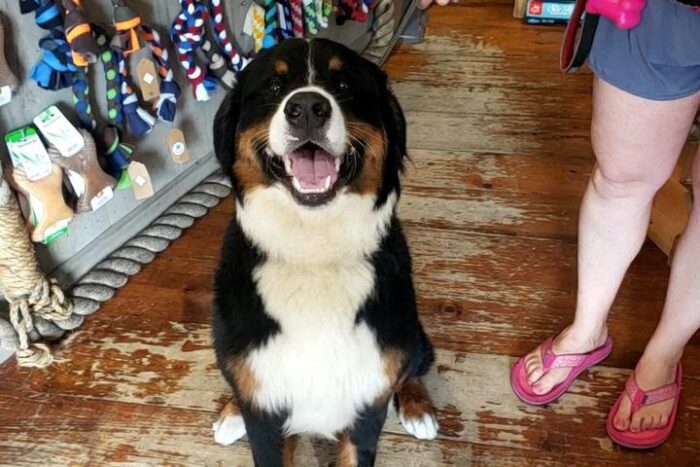
Dog treats offer our canine friends a tasty snack in-between mealtimes and are also useful for dog training. They allow you to reward your dog’s good behaviour both in training and in their everyday routine. Hopefully, it will encourage them to express the same good behaviour in the future!
There are many different types of dog treats available, and each is good in different instances. Small kibble shaped treats are great as training aids, whilst dog chews are good boredom busters and ideal for any avid chewer! There is also a fabulous selection of celebration treats for special occasions. These are designed as one-off treats and may be much higher in calories.
One of the reasons treats work so well in training is that a dog’s sense of smell is unbelievable. Dogs can smell a treat from over 20 yards away and get a pretty good idea of the main ingredients. Not all treats are created equal, though. Here are some tips for which healthy dog treats to give, how to give dog treats, and when to give dog treats.
How to Use Dog Treats Most Effectively?
Use treats to reinforce a calm, submissive state. Never use dog treats to reward an excited, overstimulated state of mind. Always let the dog smell the treat first, but hold it up away from her and wait. Remember, dogs can smell from over 25 feet away, so you don’t have to put the treat under a dog’s nose. Once the dog has the scent, she may jump around at first and will probably jump on you. If so, indicate your disapproval with your attitude and body language, slowly move yourself back or to one side and then wait. Remember, your moment of patience as an owner will pay off in a well-behaved dog for a lifetime.
After a while, your dog will probably begin to try to figure out what she needs to do to get the treat. She will lower her butt to the floor and wait while looking at you in quiet anticipation. At that precise moment of calm, give her the treat. Don’t use treats to reinforce an excited dog, but rather command the calm, submissive state.
When to Give Dog Treats?

In between meals is the ideal time to give treats. Choose a treat that your dog will enjoy. As a rule of thumb, it is recommended to save the best, most delectable treats for last to reengage a dog if she begins to lose interest in the training session. If you are using treats as a training tool, your treat won’t work as well right after your dog has had a full meal. Make sure your treat giving occurs between meals and not immediately before or after a meal.
Here is a good technique for giving treats. Hold the treat between the first two fingers and the thumb in your hand. Let your dog sniff so that she knows it is there, and remember the rule: nose first, then eyes, then ears! When you engage your dog’s nose, you appeal to the most important part of her brain.
Next, as she is sniffing and getting interested, slowly lift the treat above her nose height and move it gradually over her head and slightly back towards her shoulders. The aim is for your dog to lift her head up, move her shoulders back, and naturally have her butt lower to the floor.
Lift the treat slowly and easily so that your dog’s nose follows it in your hand. If she jumps at your hand, take it away. Next time, have the treat hand closer to her head. The moment she begins to follow the treat with her nose and eyes and her butt begins to move to the floor, say, “sit,” calmly and easily, and give her the treat. Use a natural voice, as you don’t want to startle or distract her. Remember, one of the cardinal rules for training is “don’t over excite your dog so that she loses the lesson in all the commotion.” Get the best one in the pet supply store.
What Ingredients to Look For in a Dog Treat?
When choosing a dog treat, make sure it’s something your dog will like and something that’s appropriate to give a dog. When buying treats (and food) for dogs, it’s good to follow the same common-sense rules you’d use when shopping for your family. Look at the ingredients list. If the ingredients include things you don’t recognize or can’t pronounce, it might not be the best treat for your dog. Also, keep in mind your dog has a different palate than a human. You might not serve beef trachea at your next dinner party, but it’s like fillet mignon for your dog. The medium size dogs love liver bites, and large breeds would do almost anything for beef tendons.
Also, keep in mind that human treats are not necessarily good for dogs. You’d think if a dog would like beef tendons, he’d probably go for a chocolate bonbon, but chocolate actually makes dogs sick. We eat many things that dogs are allergic to or literally can’t stomach.
Ask the vet or local pet specialty store about dog treats

Your veterinarian is a lot of things to your dog—doctor, dentist, pharmacist, and you can add a nutritionist to that list. Your dog’s nutritional needs will vary based on age, breed, and other factors. Your vet can give you the best advice on what types of treats are best for your dog. If you don’t have access to a vet, try your local pet speciality store. You will find very knowledgeable sales help in local pet stores.
Exercise and Discipline Before Affection
Remember, dog treats are a form of affection. They need to be given at the right time and for the right reasons. You can actually confuse your dog if you’re not consistent in administering treats. Make sure exercise and discipline come first and then affection.














